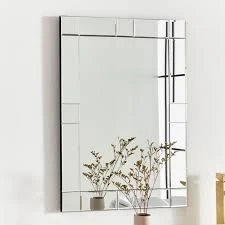

Understanding Clear Annealed Float Glass
Clear annealed float glass is a widely used type of glass that has unique properties making it ideal for various applications. The term float glass refers to a specific manufacturing process that produces flat glass, leading to its distinctive characteristics of clarity, smoothness, and uniform thickness.
The float glass manufacturing process involves melting raw materials such as silica sand, soda ash, and limestone at high temperatures to form molten glass. This molten glass is then poured onto a bed of molten tin. The glass floats on the surface of the tin, forming a smooth and even layer. As the glass cools, it solidifies into a flat sheet, which can be further processed into different sizes for various uses. The annealing process, which involves controlled cooling, removes internal stresses within the glass, enhancing its strength and durability.
One of the standout features of clear annealed float glass is its exceptional optical clarity. With low levels of distortion and minimal color tint, this type of glass allows maximum light transmission, making it suitable for applications where visibility is crucial. Whether used in storefronts, windows, or glass doors, the transparency of float glass allows for an unobstructed view while ensuring that natural light can freely flow into a space.

In addition to its aesthetic and functional properties, clear annealed float glass is environmentally friendly. The materials used in its production are abundant, and the manufacturing process produces minimal waste. Moreover, float glass is recyclable, contributing to sustainability efforts in the construction and manufacturing industries.
Clear annealed float glass is not only prized for its clarity but also for its versatility. It can be cut, shaped, and treated to enhance its characteristics for specific applications. For instance, it can be tempered for increased strength or laminated for safety. These processes broaden its applicability to diverse fields, including architecture, interior design, automotive industries, and even electronics.
In architectural applications, clear annealed float glass plays a significant role in both residential and commercial buildings. It is commonly used for facades, skylights, and partitions, offering a sleek, modern look while ensuring energy efficiency. Its ability to be used in double-glazing units improves insulation, reducing energy costs and enhancing comfort within buildings.
Overall, clear annealed float glass represents a remarkable fusion of aesthetic appeal, functionality, and sustainability. Its various applications across multiple industries highlight its significance in modern design and construction, making it a fundamental material that meets the needs of both consumers and the environment. Whether enhancing a building’s façade or providing clarity in everyday products, clear annealed float glass continues to be an essential choice for architects, designers, and manufacturers alike.